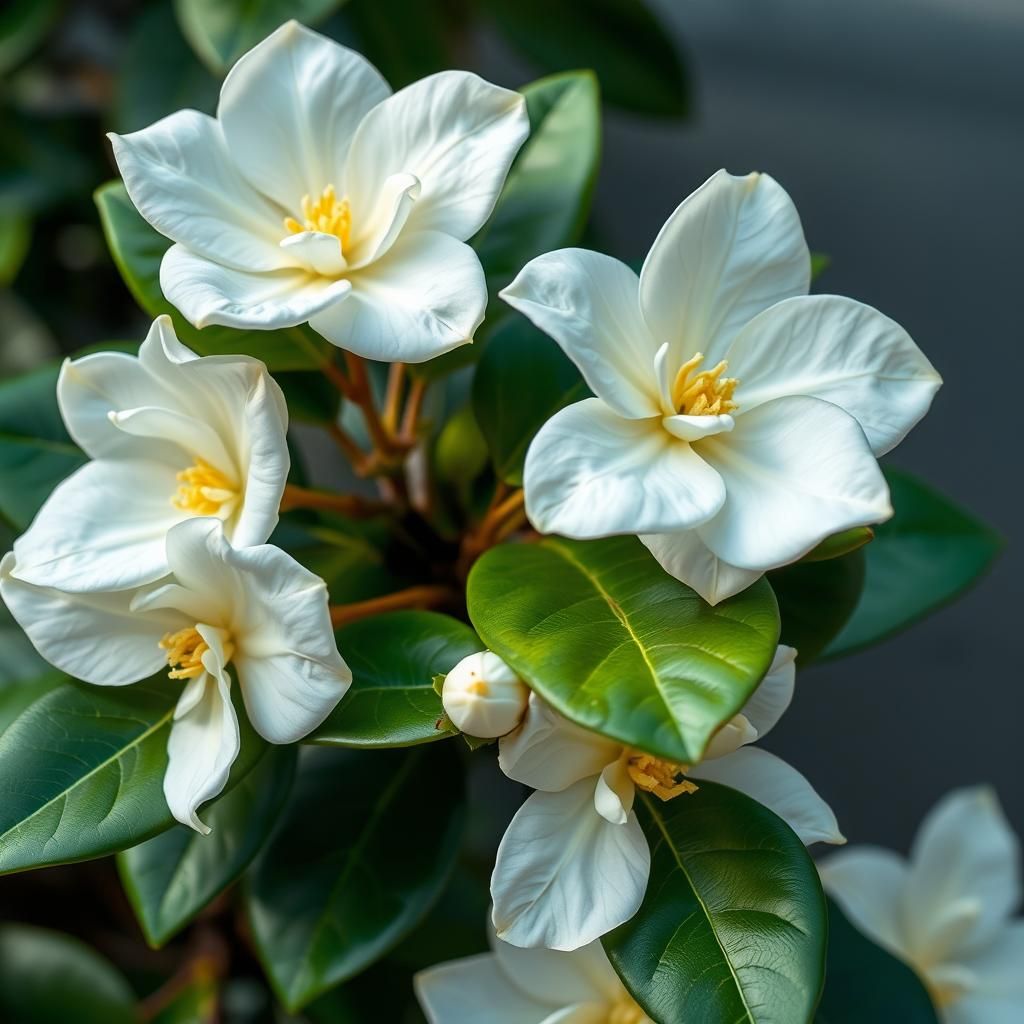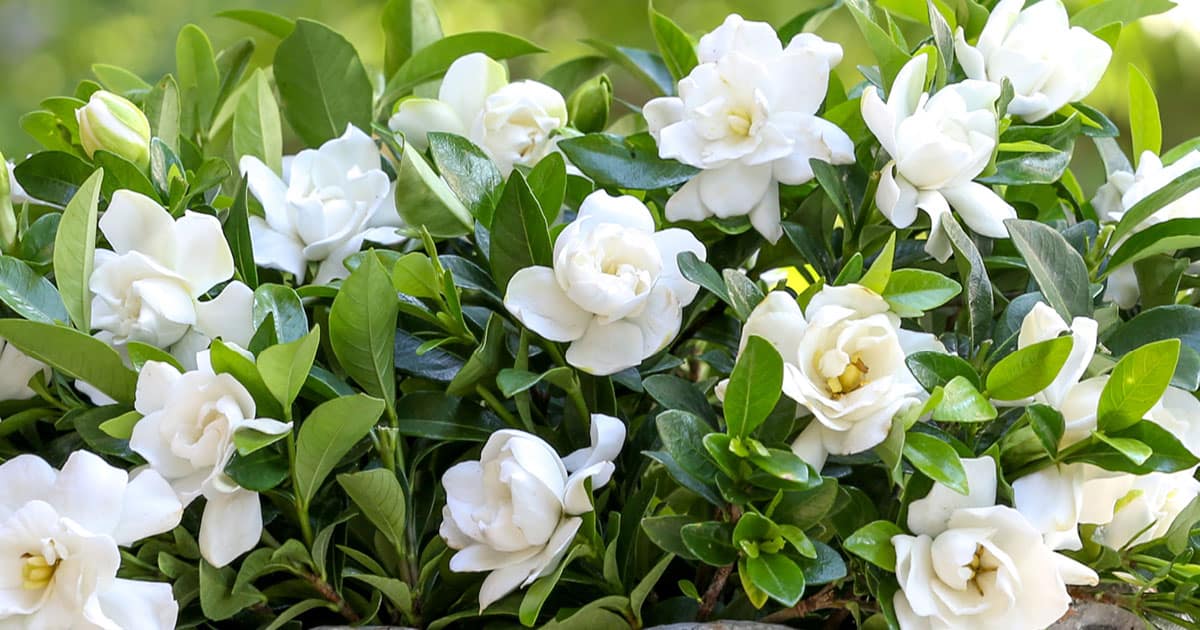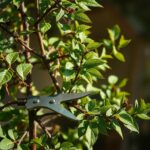When Should You Prune Gardenias: Essential Tips for Optimal Growth and Blooms

Gardenias are beloved for their fragrant blooms and glossy green leaves, making them a popular choice in gardens and landscapes. However, to ensure these stunning shrubs thrive and produce an abundance of flowers, proper pruning is essential. Understanding when and how to prune gardenias can significantly impact their growth, health, and flowering potential. In this article, we will explore the best practices for pruning gardenias, including the ideal timing, techniques, and tips to promote vibrant blooms and maintain a lush appearance. With the right approach, your gardenias can flourish and captivate with their enchanting beauty.
When Should You Prune Gardenias?
Pruning gardenias is essential for promoting healthy growth and ensuring abundant blooms, and it is best performed in early spring after the last frost has passed. This timing allows the plant to recover from pruning before the growing season begins, which is crucial for the development of new shoots. It's important to assess your gardenia's health before pruning – if your plant is unhealthy or stressed, it's wise to delay pruning to avoid further complications. Regularly removing dead or damaged wood can also enhance airflow and reduce the risk of disease, making spring the optimal time for these activities.
Understanding the Best Time to Prune
Understanding the best time to prune gardenias requires recognizing their growth cycle. Gardenias typically produce blooms in the summer, so pruning should be done in early spring, just before new growth starts. This timing encourages robust flowering as it allows the plant to focus its energy on new bud development. By avoiding late-season pruning, you reduce the risk of cutting off flower buds that will emerge in the coming months, ensuring a stunning display when flowers bloom.
Signs That Your Gardenias Need Pruning
Gardenias will exhibit specific signs when they need pruning. Look for signs of overgrowth, such as crossing branches or excessive density that obstructs light penetration. Additionally, yellowing leaves, dead wood, or damage from pests can indicate that pruning is necessary. If you notice a decline in blooming or overall health, it may also be time to prune. By addressing these issues promptly, you can help your gardenias regain their vigor and enhance their appearance.
Techniques for Effective Pruning
Effective pruning techniques are crucial for maintaining the health of your gardenias. Use sharp, clean pruning shears to make clean cuts and reduce the risk of infection. Focus on removing dead, diseased, or weak branches first, then thin out crowded areas to improve air circulation and light exposure. When shaping your gardenia, avoid cutting more than a third of the plant at one time to minimize stress. Always prune just above a node or leaf to encourage new growth from that point.
Post-Pruning Care for Gardenias
After pruning your gardenias, providing proper care is vital for their recovery and continued growth. Water the plant deeply to help it cope with the stress of pruning, and consider applying a balanced fertilizer to support new growth. Monitoring for pests and diseases is essential, as stress can make plants more susceptible. Mulching around the base of the plant can retain moisture and regulate soil temperature, further enhancing the plant's health as it rebounds from pruning.
Common Mistakes to Avoid When Pruning
Avoiding common mistakes during the pruning process is key to ensuring the health of your gardenias. One frequent error is pruning at the wrong time, which can lead to the loss of flower buds and unhealthy plants. Additionally, using dull tools can result in jagged cuts that harbor disease. Over-pruning is another mistake; cutting too much foliage can shock the plant and hinder its growth. Carefully monitoring your techniques and timing can prevent these pitfalls and help maintain robust gardenias.
| Pruning Time | Signs of Need | Pruning Techniques | Post-Pruning Care | Common Mistakes |
|---|---|---|---|---|
| Early Spring | Overgrowth | Sharp Tools | Deep Watering | Timing Errors |
| After Frost | Yellowing Leaves | Remove Dead Wood | Fertilize | Over-Pruning |
| Weak Blooms | Thin Crowded Areas | Mulch | Dull Tools |
How do I keep my gardenias blooming all summer?


To keep your gardenias blooming all summer, you need to focus on proper care and optimal growing conditions. Here are some essential tips that will help you maintain the health of your gardenias and encourage abundant blooms throughout the warmer months.
1. Choose the Right Location
Selecting the correct location is crucial for the success of your gardenias. These plants thrive in specific environments.
- Sunlight: Gardenias need at least 4 to 6 hours of indirect sunlight daily. Too much direct sunlight can scorch the leaves, while too little can hinder blooming.
- Temperature: Keep gardenias in a warm area, ideally between 65°F and 70°F (18°C to 21°C) during the day and above 60°F (15°C) at night.
- Humidity: They prefer high humidity levels. A humid environment helps buds to open and flowers to stay vibrant.
2. Proper Watering Techniques
Watering practices are vital for keeping gardenias hydrated and healthy. Over or under-watering can affect blooming.
- Moisture Level: Ensure the soil is consistently moist but not soggy. Check the top inch of soil; if it’s dry, it’s time to water.
- Water Quality: Use distilled or rain water if possible, as gardenias can be sensitive to chemicals and minerals in tap water.
- Drainage: Ensure pots have proper drainage to prevent root rot, which can severely damage the plant.
3. Fertilization Schedule
A well-planned fertilization routine is essential for promoting blooms and overall plant health.
- Type of Fertilizer: Use a balanced, slow-release fertilizer formulated for flowering shrubs or acid-loving plants.
- Timing: Fertilize your gardenias in early spring and again in mid-summer for continuous nourishment.
- Application: Follow the manufacturer’s instructions carefully to avoid over-fertilizing, which can lead to leaf burn.
4. Pest and Disease Management
To keep gardenias blooming beautifully, it is important to manage potential pests and diseases that can affect their health.
- Regular Inspections: Frequently check your plants for signs of pests, such as aphids or spider mites, and treat them promptly.
- Fungicide Use: Apply a fungicide if you notice any signs of fungal diseases, like leaf spots or powdery mildew, to protect your gardenias.
- Sanitation: Keep the area around your gardenias clean by removing fallen leaves or debris, which may harbor pests or diseases.
5. Pruning and Maintenance
Regular pruning and maintenance are key to keeping gardenias healthy and encouraging more blooms.
- Timing for Pruning: Prune your gardenias just after they finish blooming in the summer to encourage next-season growth.
- Shape and Size: Shape your plants and remove any dead or yellowing leaves to promote better air circulation.
- Consistent Care: Keep an ongoing care routine that involves checking for any issues or required adjustments to light, water, or nutrients.
Can I cut my gardenia back to the ground in the fall?

Cutting your gardenia back to the ground in the fall is generally not recommended. Gardenias are sensitive shrubs that require specific care to thrive, and rushing to cut them down can harm their health and flowering potential. Instead of cutting them back completely, it is better to adopt a more moderate pruning approach to ensure they maintain their health through the winter and produce blooms in the spring.
See also:
Understanding Gardenia Pruning
Pruning gardenias is essential to maintaining their shape, promoting growth, and encouraging flowering. However, understanding when and how to prune is crucial:
- Timing is everything: The best time to prune gardenias is early spring after the last frost, not in the fall.
- Technique: Use sharp pruning shears to avoid damaging the plant, cutting back just a third of the branches.
- Purpose: Pruning helps to remove dead or damaged growth and improves air circulation.
Effects of Cutting Gardenias in Fall
Cutting gardenias back to the ground in the fall can lead to several negative consequences. Understanding these effects is vital for proper plant care:
- Frost Damage: Fresh cuts can lead to new growth that is vulnerable to frost, causing potential damage.
- Flowering Issues: Pruning in the fall can disrupt the plant's natural flowering cycle, resulting in fewer blooms.
- Weakened Plants: An aggressive cut can weaken the shrub, making it more susceptible to pests and diseases.
Proper Fall Care for Gardenias
Instead of cutting gardenias back completely, focus on proper fall care to prepare them for winter. Here’s how to care for them:
- Mulching: Apply a layer of mulch to protect the roots from frost and maintain moisture levels.
- Watering: Continue to water the plants until the first hard freeze to ensure they don’t suffer from drought stress.
- Monitoring: Keep an eye out for pests and diseases, and address issues promptly to maintain plant health.
When to Prune Gardenias
It is important to know the best time to prune gardenias to ensure optimal growth and flowering. Consider the following aspects:
- Spring Timing: The ideal pruning period is just after the last frost in spring to avoid frost damage.
- Maintenance Pruning: Light pruning can be done throughout the growing season to shape the plant.
- Flowering Cycle: Pruning should be timed to not interfere with the blooming cycle, enhancing flower production.
Learning from Experienced Gardeners
Engaging with experienced gardeners can provide valuable insights into proper gardenia care. Here’s what you can learn:
- Shared Experiences: Listening to their stories can help you avoid common pitfalls in gardenia care.
- Pruning Techniques: Experienced growers can offer tips on effective pruning techniques and timing.
- Care Practices: They can share their best practices for watering, fertilization, and pest management specific to gardenias.
Questions from Our Readers
When is the best time to prune gardenias?
Pruning gardenias is best done in the late winter or early spring, just before the new growth begins. This timing allows you to remove any damaged or dead branches and shape the plant without interrupting its blooming cycle.
How much should I prune my gardenia?
You should aim to prune no more than one-third of the plant at a time. This helps to maintain its health and encourages strong new growth while avoiding shock that can occur from heavy pruning.
Can I prune gardenias after they bloom?
While you can prune gardenias after they bloom, it's generally better to do so in the early spring. Pruning after blooming can reduce the number of flowers for the next season since they typically set buds on previous year's growth.
See also:
Should I prune gardenias in the fall?
It is not recommended to prune gardenias in the fall, as this can expose the plant to cold weather and potentially damage its growth. Pruning should focus on early spring when the plant can best recover and thrive.

If you want to read more articles like When Should You Prune Gardenias: Essential Tips for Optimal Growth and Blooms, we recommend you check out our Pruning category.
Leave a Reply
Related Articles